Ayurveda
A Vegetarian Ethical Diet for Peace and Plenty
Published
5 years agoon
By
Vedic Tribe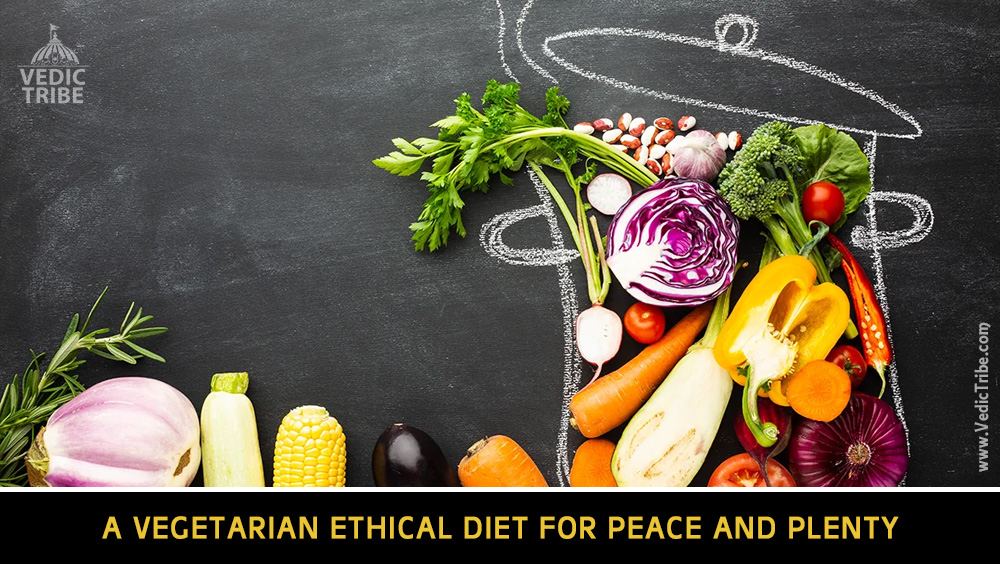
~ R. P. Jain, director of Motilal Banarsidass
Vegetarianism affords an ethical diet for peace and plenty. It is good for health, spirituality, sound ethics, balanced ecology and favorable economics. These are among the reasons a plant-based diet beats meat eating.
In India, the land of AHIMSA (nonviolence) people have traditionally been vegetarian. Hailing from a family of staunch vegetarians, I consider myself fortunate to be living in harmony with the principles of nature. As a follower of Jainism, I strongly advocate a vegetarian diet, which I find superior not only from a moral stance, but also from the health and culinary points of view. Guests at our home, coming from both vegetarian and non-vegetarian backgrounds, are always overwhelmed with what they describe as the unbelievable taste and richness of our vegetarian cuisine.
Sadly, in recent times many Hindus, Jains and Buddhists, especially of the younger generation, are no longer so strict about our precepts and have taken to non-vegetarian food, mostly following the misconception that meat-eating is healthy. Truth must be told; a vegetarian diet is actually much healthier than one based on animal protein. It is argued that there is a lot of protein in meat and eggs, but we do not need so much concentrated protein in our diet. There is plenty of protein in nuts, seeds, pulses and dairy products, which are also far easier to digest.
Vegetarianism supports mental and physical health as well as spiritual cultivation. Fruits, vegetables, pulses, nuts and milk products provide a balanced diet, which does not make our system toxic. This is primarily because when an animal is killed, it becomes dead matter. In the case of many vegetables, if we eat part of the vegetable and re-plant another part, it can grow again; it is still a living organism. It is a healthy sign that more and more people in the US, UK, Europe and other parts of the world are taking to a vegetarian diet in modern times, chiefly due to health reasons. There is a growing acceptance in the West that vegetarianism connotes a more positive way of living than flesh eating. In India, the pilgrimage destination of Haridwar still enjoys the status of being a vegetarian city. Even in Japan, known to be virtually 100 percent non-vegetarian, you can now find vegetarian restaurants. My friend Martin Gluckman, who runs the Vedic Society and teaches organic and Ayurvedic cooking in South Africa, hails Indian vegetarianism in the following words: “India has the world’s greatest cuisine and most variety of dishes, boasting to its amazing cultural and spiritual heritage. It has a time tested vegetarian cuisine offering a delight for all senses and the heart.”
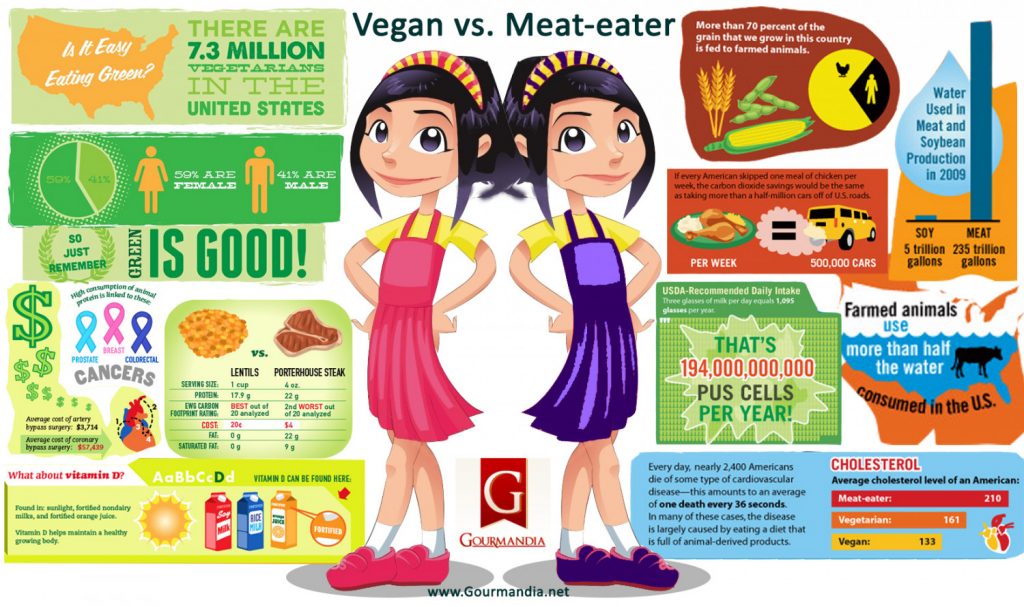
India can be proud to have the world’s largest per-capita number of vegetarians (I have read reports of more than 40%). No other country can make such a statement of humanity and nonviolence. The vegetarian culture and lifestyle are India’s greatest achievement and gift to the world. Only in years to come will the true value of this gift be known.” It is important that we remain vegetarian not only for our health and nutrition, but from the points of view of spirituality, compassion, ethics, ecology and economics as well. When we see the end product of meat in the supermarket or leather in the shoe store, there is a long chain of violence that created it. These products endorse and perpetuate violence in our society, which contributes to the terrorism that is rampant across the world. Eating habits reflect upon a human being’s thoughts, speech and behavior. A non-vegetarian diet makes one prone to violence. By moving away from food of violence we can move rapidly toward world peace.
Albert Einstein affirmed, “It is my view that the vegetarian manner of living, by its purely physical effect on human temperament, would most beneficially influence the lot of mankind.” When a helpless animal is killed by a deliberate act of violence, it dies in great dread. Its body is flush with hormones produced by fear. These toxic substances enter the body of the person who eats the flesh and adversely affect his or her body and mind. I have always wondered, how can the carcass of an animal that died in mortal fear give good health and refined, spiritual inclinations to its consumer?
Additionally, meat production is one of the most environmentally damaging industries in terms of pollution and inefficient use of agricultural land. According to a 2006 report from the United nations Food & agriculture Organization, livestock production is responsible for more greenhouse gasses than all the motor vehicles in the world, plus it severely degrades land and water. It is also necessary to remove the myth and argument that vegetarians will not get enough food if non-vegetarians do not eat meat. This is a fallacy. It has been conclusively proven that more people can be sustained on vegetarian food than a diet based on meat. Live- stock occupy over 30 percent of our planet’s land surface, and 33 percent of global arable land is used to grow their feed, pointing to why a meat-based diet requires seven times more land than a plant-based diet. Thus, one of the easiest ways to help restore our environment and feed more people is to stop raising and killing animals for human consumption. We have no right to take the life of an animal when we cannot give it.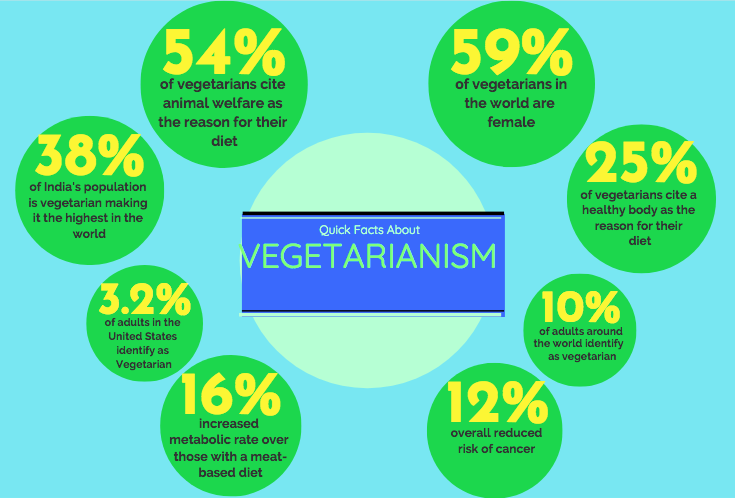
Economically, a vegetarian diet is preferable to a non-vegetarian diet. The same energy one can get from meat and eggs one can get from pulses and cereals. It actually costs three or four times as much money to produce an equivalent amount of calories from animal sources as from vegetable sources. Some people may worry that self-control and too much care about nature would hamper development and bring about poverty. We know too well, however, that the more we consume, the more expensive things become, leading to the growth of the destitute class. Reckless commercial development also results in economic and social crises, bringing further suffering to the poor.
AHIMSA does not deny economic development; it only exercises self-control, limits our desires. Desires are endless. More and more desires give rise to materialism and extraordinary greed, far beyond basic human needs and sustainable consumption. Greed results in the destruction of the very roots of our life. If we want to prevent the world from becoming a barren desert and our societies from growing into monstrous systems of injustice and suffering, self-control and nonviolence appear as the only reasonable answer – not only for Jains, but for people of any creed. For any spiritual being, the destruction of life, be it in the air, the water or on the ground, is undesirable. But even if you do not subscribe to this principle, you will agree that reckless destruction of life could eventually lead to mankind’s own demise. Jainism is not the only Indian school advocating nonviolence and self-control as central principles. Buddhism and Hinduism equally preach them.
You may like
-


Seven Vows and Steps (pheras) of Hindu Wedding explained
-


Sari or Saree is symbol of Indian feminism and culture
-


Atithi Devo Bhava meaning in Hinduism and India
-


Sanskrit Is More Than Just A Method To Communicate
-


Karma Yoga – Yog Through Selfless Actions
-


Four Sacrifices in Hinduism according to Bhagavad Gita
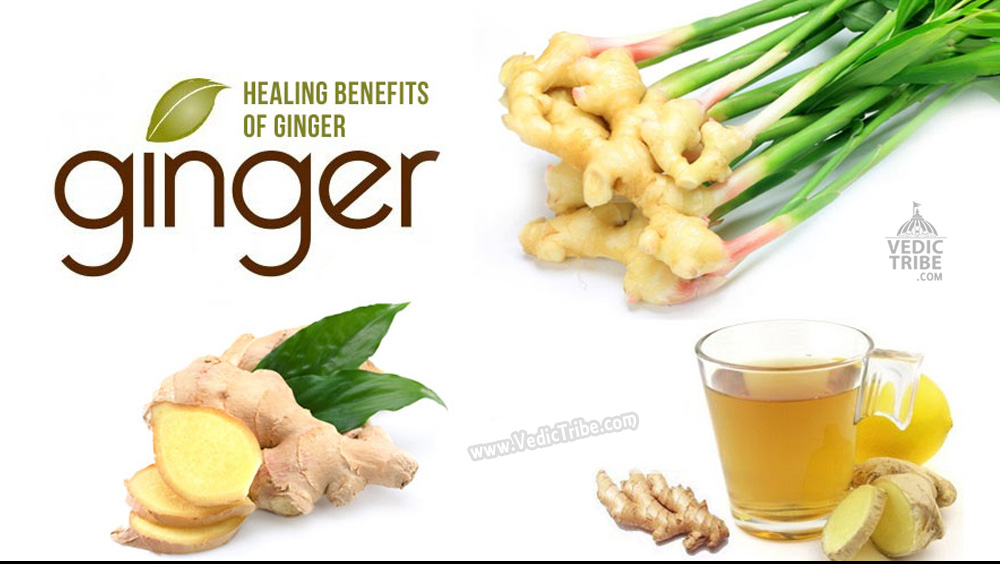
Ayurveda gives ginger the status of a virtual medicine chest. That’s because this wonder spice has time-tested, digestion-friendly properties, in addition to its numerous other health benefits. In India, ginger is liberally used in daily life. Ginger-infused chai is a household favorite, and it’s grandma’s antidote of choice for battling cold and flu.
On millions of dining tables in India, you’ll see matchsticks of fresh ginger that have turned a soft pink from being soaked in lemon juice and salt: a zingy accompaniment to any cooked meal.
Let’s give this knobbly root a closer look.
10 Terrific Benefits of Ginger
Traditional medicine systems all over the world have applied ginger to a wide range of ailments, including calming an upset stomach. Recent studies of ginger have confirmed this effect and much more. Let’s take a look at some of the amazing benefits of ginger.
1. Helps Calm Nausea & Vomiting
Clinical studies have shown ginger’s effectiveness at calming nausea and vomiting. Research has also confirmed its potential for soothing chemotherapy-induced nausea and vomiting. The majority of studies found a positive effect of ginger against this side effect of aggressive therapies
2. Digestive Tract Protection
Ginger has also been used historically for flatulence, constipation, bloating, and other digestive complaints. In addition to these gastro-protective effects, researchers have found ginger to be effective for stress-related ulcers.
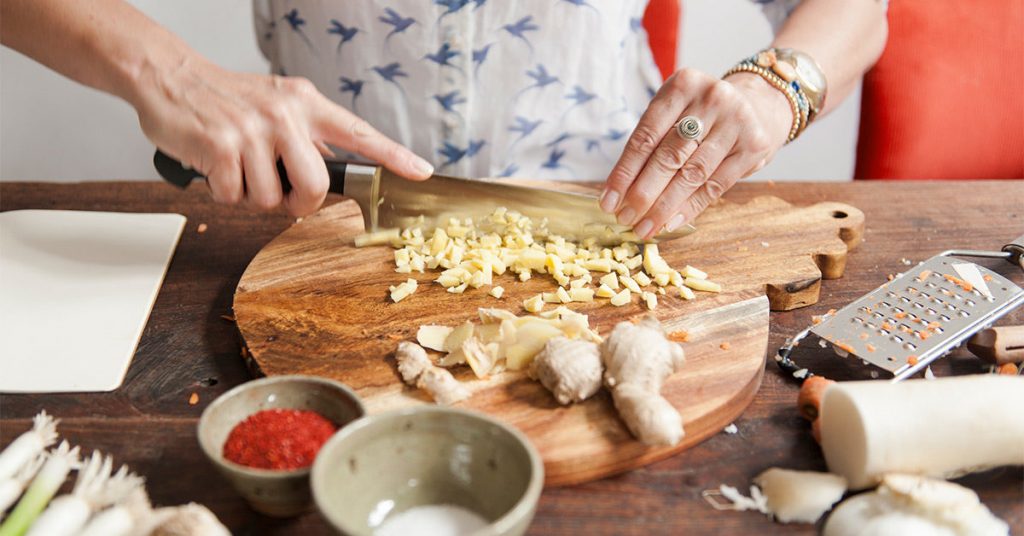
3. Brain Health
Ginger contains compounds that have demonstrated protective effects for the brain. One of them, known as 6-shogaol, inhibited the release and expression of redness-causing chemicals which damage neurons (nerve cells). Another ginger compound, 10-gingerol, similarly acted in an anti-neuroinflammatory manner. In other words, fresh ginger’s 10-gingerol reduced redness and swelling in the brain.
4. Migraine Relief
In a clinical trial, 100 patients received ginger powder or a drug given to migraine sufferers. The results showed the ginger powder helped reduce migraine related discomfort without side effects.
5. Protection From UV Rays
Ginger possesses UV-absorbing capabilities that protect against DNA damage related to UVB (ultraviolet-B) light. Extracts from ginger stimulated the production of an antioxidant protein in cells, and provided protective effects against damaging UV light.
6. Supports Stable Blood Sugar
Ginger has repeatedly demonstrated powerful blood sugar balancing effects. It acts on insulin release and sensitivity and supports the metabolism of carbohydrates and lipids. Insulin levels may noticeably lower with ginger supplementation. In addition to its effectiveness as a blood sugar stabilizer, ginger has also shown powerful protective effects against diabetic kidney, eye, and liver complications.
7. Promotes Healthy Blood Pressure
Thai medical practitioners have traditionally used herbs such as ginger to support healthy blood pressure. Extracts from ginger and other herbs used in therapeutic recipes were evaluated for their effectiveness against hypertension. The ginger extract was the most effective.
8. May Benefit Osteoarthritis
A recent study tested ginger against drugs used for osteoarthritis — the ginger extract was demonstrated to be as effective. Another group of people with osteoarthritis found ginger to be as effective and safer than NSAIDs.
9. Helps With Muscle Aches & Discomfort
Ginger can be used to relieve muscle discomfort in female athletes. After taking ginger for six weeks, athketes taking ginger saw a significant decrease in muscle soreness as compared to the placebo.
10. May Benefit Cardiovascular Function
One of the active compounds in ginger, 6-gingerol, has been isolated, tested, and determined to be an active factor in supporting cardiovascular health. Based on the results, researchers are exploring the potentials of ginger as a remedy for cardiovascular concerns.
Using Ginger
Ginger has an extremely robust flavor which makes consuming it a little bit tricky. It might be too strong to ingest on its own, but as I mentioned, it mixes incredibly well into tea or fresh juice. It also makes a great ingredient in many recipes, and you can find it in some healthy snacks.
Ayurveda
Ayurvedic diet for everyday healthy lifestyle
Published
5 years agoon
December 2, 2020By
Vedic Tribe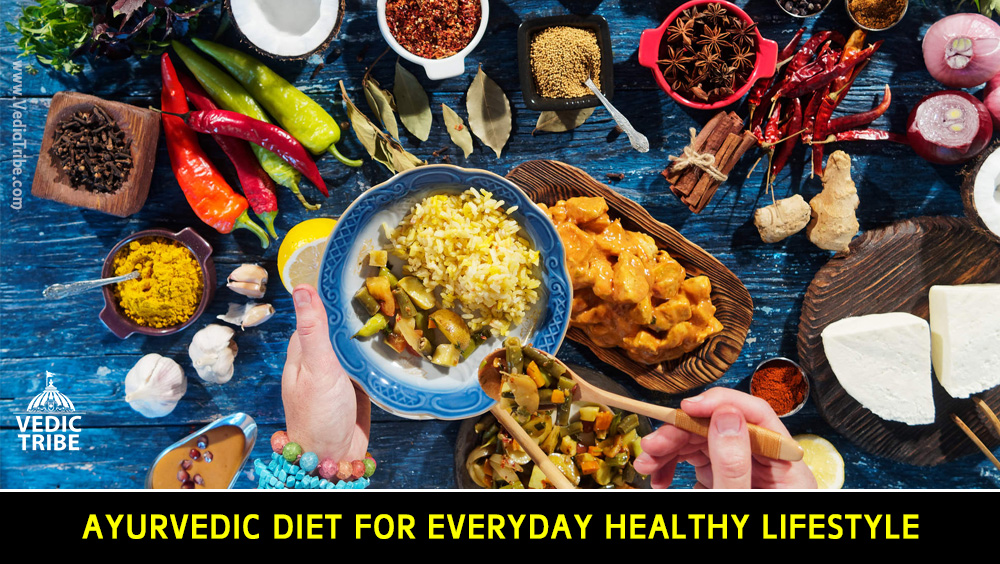
Making an Ayurvedic diet part of you every day lifestyle doesn’t have to be expensive or difficult.
People in the Western world are starting to become more aware of the benefits that Ayurvedic dieting can have on their overall health. However, there are many places that do not have Eastern food markets that are easily accessible.
While it is much easier to find some of the more obscure Ayurvedic foods, herbs, and ingredients in this type of market, the bottom line is that you will be able to find all the foods that you need for this type of diet in pretty much any supermarket.
This article will talk about which foods you should be on the lookout for the next time you go shopping. You will also find out which foods are ideal to consume for your specific dosha, which is another name for an Ayurvedic body type.
First, let us begin be explaining what a dosha is. According to Ayurveda, every person has their own unique blend of three principles of the body and mind. This blend helps to create each person’s unique physical and mental characteristics. Doshas are these three principles.
The three doshas are called Kapha, Pitta and Vata.
If you are unaware of what your dosha is, there are various quizzes online that you can take to let you know. Each dosha has foods that will help to balance it and foods that will aggravate it. The key to maintaining good health through an Ayurvedic diet is to learn which foods to eat and which foods to stay away from as they relate to your dosha.
Ayurvedic dietary recommendations for vata-pitta-kapha type individuals follow a common sense approach, requiring small changes to your food choices and eating habits. The importance of a wholesome diet that includes every food group is heavily emphasized, but there are clear guidelines on specific foods and beverages that should be included or limited. These recommendations are based on the unique properties of your dominant doshas and an analysis of the unique properties of foods, which influences their interaction with the doshas.
When planning an Ayurvedic vata-pitta-kapha diet, we look at 3 important qualities or characteristics of food – Rasa or taste, Virya or energy, and Vipaka or post-digestive effect. Understanding this Ayurvedic classification of food and your unique doshic makeup will allow you to make informed dietary choices. As someone with a tridoshic constitution, which is not very common, you have it pretty easy, as you can enjoy almost all foods in moderation. However, you need to understand the Ayurvedic classication of foods, so that you can recognize what constitutes balance. This may be a little tricky when you’re just getting started, which is why it helps to refer to a dosha-specific diet guide. So, here’s what every vata-pitta-kapha type individual should keep in mind.
Vata-Pitta-Kapha Food Qualities
As a tridoshic individual, you can be vulnerable to imbalances of all three doshas – vata, pitta, and kapha. This makes it important for you to recognize the qualities of each of the doshas. In case you notice signs of aggravation of any one of your doshas, you should modify your diet to pacify that dosha.
In case of vata aggravation, your meals should include a significant amount of foods that are heating, moist or oily and lubricating, grounding, and stabilizing. Salty tastes have a pacifying effect only on vata and should therefore be included too.
In case of pitta aggravation, your meals should include more foods that are cooling, heavy or grounding, and drying. Pitta can be pacified with sweet, bitter, and astringent tastes. However, these tastes can also pacify vata and kapha. This makes it a challenge, as you now need to ensure that you balance your intake to avoid unnecessary vata or kapha pacification. This basically means that a sweet taste that pacifies both vata and pitta, while aggravating kapha, should be combined with bitter tastes that pacify pitta and kapha, while aggravating vata. This would balance the pacifying and aggravating effects on vata and kapha, only pacifying pitta.
In case of kapha aggravation, your meals can include foods that are heating, light, and drying. Kapha can be pacified with pungent tastes as pungency has a pacifying effect on kapha alone, without pacifying your other two dominant doshas.
For a tridsoshic constitution, it is especially important that your diet choices reflect the changing seasons. Vata aggravation is most likely during the months of fall and early winter, pitta aggravation during late spring and summer, and kapha aggravation during winter and early spring.
The Best Foods for Your Dosha
The best way to start your day is with a cup of herbal tea with herbs, using herbs that pacify all three doshas, such as anantamul and brahmi. Herbs like ginger and ashwagandha can also be beneficial, but should not be used during the summer months as they can aggravate pitta.
Breakfast:
Although lunch is regarded as the most important meal of the day, a healthy breakfast helps to keep your energy levels stable through the morning, lowering the risk of unhealthy food cravings prior to lunch. Staying attuned to the seasons and their influence on your doshas, it would be best to consume a light breakfast that includes cream of wheat or barley, or puffed rice or wheat with coconut milk and ghee during summer, fried eggs with sautéed or steamed vegetables or a bowl of cereal with hot milk during the months of fall, and fresh fruits, stewed fruit, fruit juice or smoothies during winter.
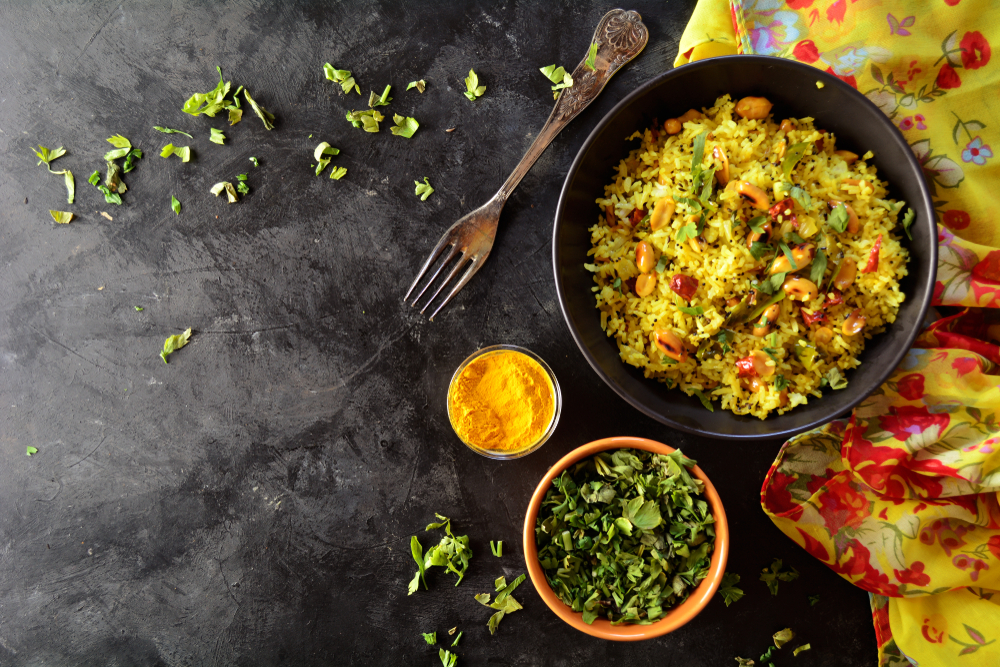
Poha with herbs and spices
Occasionally, you can also consume an Indian breakfast staple called poha that has a balancing effect on all three doshas. Prepared with rice flakes that are similar to rolled oats, the rice is soaked, drained, and lightly fried along with herbs and spices like mustard seeds, cumin seeds, asafetida, cilantro, and curry leaves.
Lunch:
Ayurveda regards lunch as the most important meal of the day, so no matter how busy your schedule may be, try to have a wholesome and balanced meal that includes various food groups. The ideal foods to add to your lunch include the likes of cooked basmati rice or oats or quinoa, with split yellow múng dal and ghee. As an alternative, you could include a whole grain non-wheat pasta. This should be accompanied with sautéed or cooked vegetables like asparagus, artichoke, bok choy, parsnips, parsley, okra, pumpkin, sweet potatoes, yams, squash, and taro root. Raw veggies and salads can be consumed during summer, but in moderation.
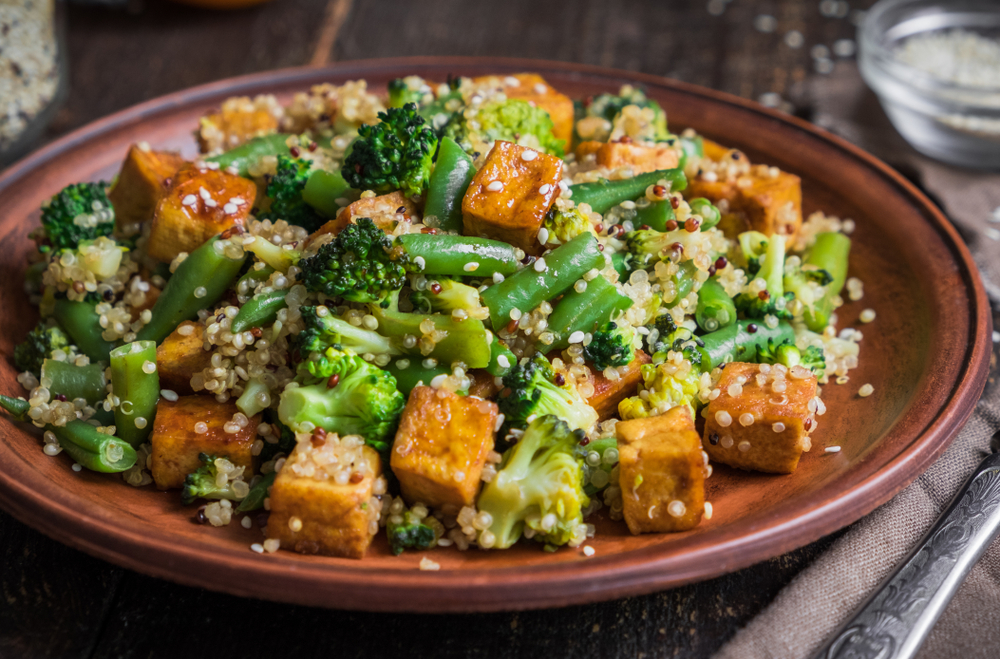
Quinoa with tofu and vegetables
Your meal should also include some healthy protein-rich foods. This could come from legumes like azuki beans, red or green lentils, French beans, black eyed peas, tofu, and tempeh. Meats may be consumed in limited quantities and should only include healthier varieties like fish, chicken, and turkey. Red meat intake and processed meats should be severely restricted or avoided. All of your meals can be garnished with herbs and spices like asafaatida, basil, cinnamon, clove, cumin, dill, fennel, fenugreek, mint, ginger, sage, saffron, rosemary, thyme, and turmeric.
You can follow your meal with a drink of buttermilk or an herbal tea. With a tridoshic constitution, it is important to look for signs of imbalance and to make dietary adjustments to treat aggravation of any dosha, as and when they arise.
Dinner:
Your dinner can include similar foods as at lunch, but the serving size should be significantly smaller. Aside from rice and pasta, you could include a small bowl of soup or stew. Kitchari is a particularly healthy option and can be prepared to meet your special tridoshic requirements. While basmati rice and split mung dal are the staple ingredients in kitchari, you can include herbs and spices like fennel seeds, mustard seeds, cumin seeds, ginger, turmeric, cinnamon, and coriander to cater to your tridoshic needs. This can be accompanied with or combined with vegetables like French beans and carrots.
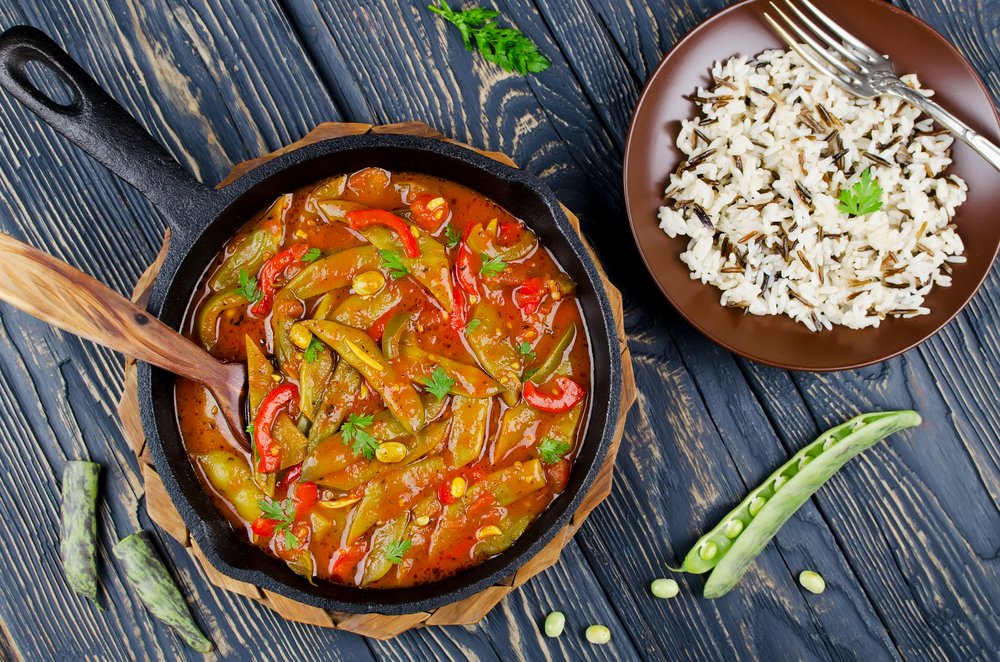
Vegetable stew with beans, paprika and spices
It can help to follow your dinner with a glass of buttermilk or herbal tea, favoring herbs like brahmi, cumin, coriander, and fennel.
Snacks:
With your tridoshic constitution, you have a wider range of snacks to choose from and can include fresh or stewed fruits, dry fruits and nuts, healthy nut butters like almond butter on toast or tortillas, avocado dip with cucumber or celery sticks, roasted yam or sweet potato, berries with coconut milk, and so on. Healthy fruit choices for your dosha type would include apples, avocado, sweet apricots, banana, berries, cherries, grapes, limes, lemon, and pomegranates.
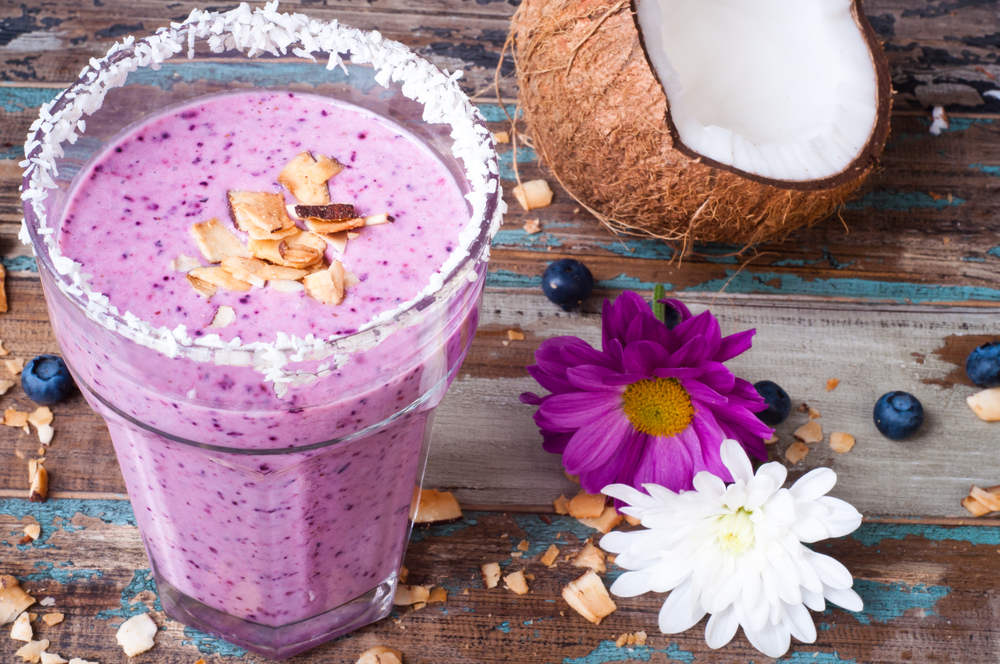
Mixed berry smoothie in coconut milk
Dry fruits like raisins, dates, and dry figs are good options, while nuts like almonds, pine nuts, cashews, and seeds like pumpkin and sunflower are healthy choices. Nuts can be roasted or fried lightly before consumption.
Timing Your Meals
As a vata-pitta-kapha type, you’re probably already aware of the importance of a daily routine or dinacharya in Ayurveda. Meal timings are an important facet of this daily schedule and should be adhered to as far as possible. Keeping this in mind you should consume your:
- Breakfast around 7:30 am
- Lunch around 12 pm
- Dinner around 7 pm
Obviously, adhering strictly to this routine can be challenging, especially when it comes to dinner time. If your work schedule does not allow for an early dinner, simply try to eat as early as you can.
Vata Balancing Foods
There are a wide range of foods that Vata body types can be found at most supermarkets to more easily balance their bodies. Fruits such as watermelon, prunes, plums, pears, mangos, figs, berries, apples, raisins, pomegranates, pineapples, melons, grapes, dates and avocados are all beneficial. Essentially, any sweet fruit you can find will have a balancing affect on a Vata body type. However, you should also be aware that any sour fruits could cause aggravation for Vatas.
In terms of vegetables, Vatas can feel free to indulge in zucchini, squash, parsnips, olives, green beans, beets, and artichokes to name just a few. Vatas should remember that vegetables that are cooked are the ones that are the most balancing. Raw vegetables should be avoided at all times.
Grains such as wild rice, wheat and oats are all beneficial to Vatas.
As far as dairy products go, yogurt, cheese and milk from a goat, milk from a cow, buttermilk and cheese are all able to be consumed in moderation.
Pitta Balancing Foods
The balancing fruits for Pitta body types are similar to those of Vatas. Sour fruits should also be avoided by Pitta’s. In terms of grains, there are a wider variety that are acceptable, including cooked oats, white rice, oat granola, millet, buckwheat, brown rice and wheat bran.
Acceptable vegetables include mushrooms, potatoes, leafy greens, zucchini, artichokes, cauliflower, Brussels sprouts and broccoli. Both bitter and sweet vegetables are considered to be balancing for Pittas.
Kapha Balancing Foods
Kaphas can become easily aggravated by dates, bananas, and other sweet fruits. However, all of the fruits listed for Vata body types are acceptable.
There are many nuts and legumes that are known to be balancing for Kaphas, such as white beans, red lentils, navy beans, sunflower seeds, flaxseeds, black-eyes peas, split peas, pinto beans, lima beans, pumpkin beans, peanuts, coconut, cashews, Brazil nuts and almonds.
Eggs are acceptable, as long as they are eaten in moderation. There are some foods that may be difficult for many people who are Kapha’s to avoid. If you have this body type, you should stay away from all seafood, lamb, duck, pork, freshwater fish and beef. Even venison should not be consumed. Diluted yogurt and goat’s milk are acceptable dairy products.
There are a wide range of condiments, spices and herbs that are balancing for Kapha’s. Thyme, spearmint, rosemary, peppermint, paprika, onion, mustard seeds, horseradish, garlic, dill, cloves, cayenne, black pepper, basil, poppy seeds, parsley, oregano, mint and ginger can all be used to enhance the flavor of your various Ayurvedic meals.
Super Foods From Your Supermarket
Ayurvedic dieting is one of the cornerstones to effective Ayurvedic living. With the number and proximity of large supermarkets in the West, particularly in the US, there is no longer any reason to avoid this central aspect of maintaining a healthy and happy lifestyle!
The Final Word
Your diet is something personal and these guidelines are meant precisely as that – to serve as a guide. You should use your own discretion to choose the right foods and meal times, but these Ayurvedic recommendations can help point you in the right direction. Just make it a point to include as wide a variety of these foods using the information provided. After all, Ayurveda emphasizes the importance of balanced nutrition and the whole range of food available to humans is more than we could fit into a single page! Simply avoid consumption of heavily processed and refined foods, as these foods are known to raise ama levels, increasing the risk of chronic lifestyle diseases.
Ayurveda
Father of Surgery in Ayurveda : Kashiraj Divodas Dhanvantari
Published
5 years agoon
November 19, 2020By
Vedic Tribe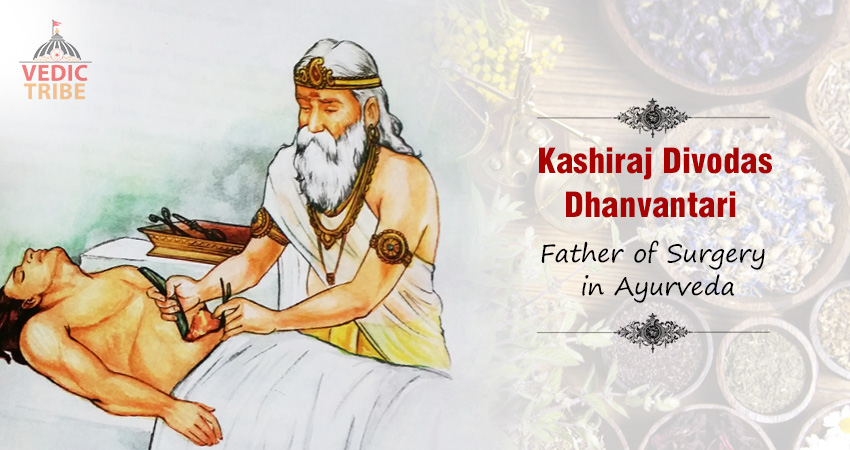
Born in 1000 BCE, Kashiraj Divodas Dhanvantari is hailed as the Father of Surgery in Ayurveda, the oldest and the most holistic medical science in the world. It forms a part of the Atharva Veda, one of the four Vedas.
Ayurveda means ‘science of longevity’, derived from the Sanskrit root ayus, meaning longevity and vid, meaning knowledge. Ayurveda originated from Brahma, the Creator. He created Ayurveda before creating man, as an upa-Veda – subsidiary of the Atharva Veda – in one thousand chapters containing 100,000 shlokas, He taught this to Daksh, who then revealed it to Ashwini Kumars, the celestial twins and physicians of the devas. They transmitted it to Indra, who revealed it to the risihis of Ayurveda. Three Important rishis of Ayurveda are: Dhanvantari, Sushrut and Charak.
The name Dhanvantari first appears in the ancient Hindu shastras as the twelfth avatar of Vishnu during the Samudra Manthan – churning of the ocean. Of the fourteen gems that sprung forth, one was Bhagwan Dhanvantari, who emerged with an urn of amrut the divine nectar which delivered its drinker from death, to attain immortality. He is also known as the original, Adi Dhanvantari, the celebrated physician of devas.
The second, down to earth Dhanvantari, was Kashiraj Divodas Dhanvantari, the King of Kashi. He was the first surgeon of Ayurveda. His teachings and surgical techniques were compiled by his foremost pupil, Sushrut, in the Sushrut Samhita which has survived over the ages. Samhita means compendium. Some of his teachings, too, were compiled in works, now lost, by his other pupils, namely Aupadhenava, Aurabhra, Bhoja, Galava, Gargya, Gopurarakshita, Kankayana, Nimi, Paushkalavata and Vaitarana. He is also the founder of the school of surgeons which came to be known as Dhanvantariyas.
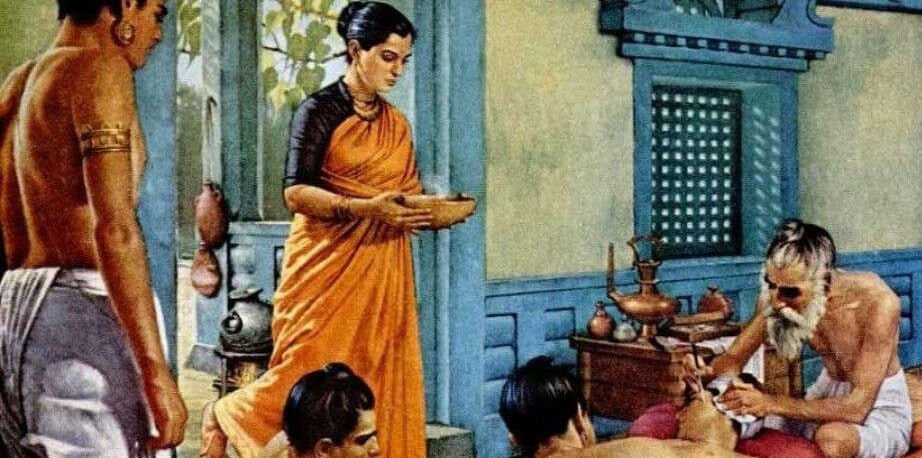
One of Kashiraj Dhanvantari’s ancestors categorized the vast range of Ayurveda into astang – eight faculties:
- Kayachikitsa – internal medicine
- Kaumarabhrtya – pediatrics
- Bhutavida – psychiatry
- Salakyatantra – oto-rhino-laryngology & ophthamology
- Salyatantra – Surgery
- Vishatantra – toxicology
- Rasayantantra – rejuvenation
- Vajikarantantra – revitalization
According to Dhanvantari, the fifth faculty, Salyantantra, was the oldest of all faculties of Ayurveda. Only after the formation of the school of surgery did the school of physicians emerge, heralded by Bhagwan Punarvasu Atreya. The latter recognized Dhanvantari as a high authority of surgery. A contemporary medical treatise, Agnivesh Samhita, also mentions that specialization in surgery had reached such a stage that general practitioners referred all cases needing surgical treatment to specialists in surgery. In this Samhita, Divodas Dhanvantari details the formation and development of the human embryo by Dhanvantari, which correlates with the vivid description given by Sushrut in his Samhita.
“The surgical instruments of Hindus were sufficiently sharp indeed as to be capable of dividing hair longitudinally.”
– Dr. Mrs. Manning (British surgeon)
A proficient surgeon, Dhanvantari laid great emphasis on the study of anatomy using cadavers. The Sushrut Samhita cites a lecture on anatomy. Jurgeon Thorwald, in his Science and Secrets of Early Medicine (1962), averred, “Certainly this was the oldest lesson in dissection known to history.” Dhanvantari meticulously described the preparation of a dead body by first disemboweling and then placing it in a stream of body of running water for seven days. He advocated preceptors to demonstrate surgical techniques in detail to their pupils, in addition to their mastery in other branches of medicine. “Otherwise,” he asserted, “a well read pupil, but not initiated in the practice of medicine or surgery, is not competent to take in hand the medical or surgical treatment of a disease.”

In the absence of PVC or the foam materials available to trainee surgeons today, Dhanvantari creatively improvised an astonishing array of natural objects for practicing surgical procedures:
| Technique | Objects used for Practice |
| Incision (cuts) Chhedya | Groud, Watermelon, cucumber |
| Excisions (removal) Bhedya | Bladder of a dead animal, puncturing a leather pouch filled with fluid. |
| Scraping – Lekhya | Piece of skin with hair |
| Venesection (puncturing a vein) Vedhya | Vein of a dead animal, lotus stem |
| Probing & Stuffing | Wormeaten wood, bamboo, Eshya reed, mouth of a dried groud |
| Extraction – Aharya | Withdrawing seeds from the kernel of a bimbi (aegle marmelos), bilva (Cephalandra indica) or ljack fruit, teeth from jaws of a dead animal. |
| Secreting or evacuating fluids – Visravaniya | Surface of Shalmali (Bombax malabaricum) |
| Suturing – Sivya | Pieces of cloth, skin or hide |
| Bandaging | Limbs of a full-sized doll stuffed with linen |
| Repairing a severed ear-lobe | Soft severed muscle of flesh, stem of lotus or lily |
| Cautery & applying caustics | Piece of soft flesh |
| Inserting a syringe or injecting enemas | Inserting a tube into a lateral fissure or pitcher full of water or mouth of a groud in bladder region or ulcerated channel |
(Sushrut, Sutrasthan 9/2,3)
The advantage of such experimental practice, according to Divodas Dhanvantari, was that an intelligent physician would never lose his presence of mind in professional practice, Divoda’s methods, as compiled by Sushrut illustrates his emphasis and insistence on discipline and high standard of training expected from a student training in surgery.
In addition to these innovative practices he also devised ingenious instruments, cited in the Sushtrut Samhita, for skilled surgery. He devised twenty sharp and 101 blunt instruments, in addition to special tables for use in major operations. Thorwald comments on these surgical instruments of ancient India. “The vast variety of Indian surgical instruments which have come down to us from the first millennium A.D. suggest that surgery had developed to an extraordinary extent in early India”

Some of the surgical procedures include lithotomy – removal of stones, skin grafting and rhinoplasty – repairing a mutilated nose. The latter two earned him the title “Father of Plastic Surgery.” However, recent scholars have conferred the title to his pupil Sushrut, probably because it was first penned in his Samhita, since Dhanvantari had no written treatise to his credit. Jurgeon Thorwald, in his book Science & Secrets of Early Medicine – Egypt, Mesopotamia, India, China, Mexico & Peru (1962), has observed that his method for rhinoplasty, which used a flap from the cheek was adopted and practiced by Gasparo Tagliacozzi, professor of surgery at Bolgona, in the sixteenth century, “There is scarcely any doubt that this method… which seemed to emerge out of nothing (in Europe), … had its roots in early India… Nowhere else in the whole world of antiquity do we find any precedent for that conception,” observes Thorwald. He added that in 1814, a newspaper account from India inspired Joseph Constantine Carpue, a pioneer of modern plastic surgery to restore a nose. This was the first attempt in Europe then. Carpue was greatly impressed by such successful operations performed by Indian village surgeons exactly as described thousands of years ago in the Sushrut Samhita.
Regarding lithotomy, Dhanvantari gave a detailed description of the removal of stones from the bladder and urethra by perineal incision (Sushrut Samhita, Chikitsasthan 7/14). Yet according to medical historians of Europe, the founders of the “Modern art of Lithotomy” were Giovanni de Romain and Marios Santos of Italy, in the late 15th and early 16th centuries. However, Thorwald doubts this and asserts that these men learned their methods from India. “Now that the texts of the Sushrut Samhita are available of at least 2000 years before that they contained an exact description of bladder surgery.”
“The vast variety of Indian surgical instruments which have come down to us from the first millennium suggest that surgery had developed to an extraordinary extent in early India.” -Jurgeon Thorwald (Science and Secrets of Early Medicince 1962)
Dhanvantari also made contributions in the fields of physiology and anatomy, dravya vignan – pharmacology and material medica – and chikitsa vignam – therapeutics. One of his important contributions has led modern scholars to also call him a molecular biologist. He gave a complete theory of drug-composition, molecular structure, physio-chemical properties and therapeutic actions of food and drugs. He based these concepts on the Nyaya system of paramanu (atoms) and anu (molecules). In physiology, he was the first in the world to cite the hemopoietic, or blood forming factor in yakrut – liver – known as ranjakpitta, and the role of both the liver spleen in the formation of blood.
He was also the first to prescribe raw goat liver for treating anemia and naktandhya (night blindness). Acharya Vagbhatta, a later proponent of Ayurveda, in the fifth century CE, described a similar factor occurring in the stomach with identical functions. In 1926, Minot and Murphy showed that liver was the most effective ingredient in the treatment of anemia. Ricks in 1948, and Smith, a few years later, described an amorphous red-principle from proteolysed liver, to be effective in pernicious anemia in very small doses – now known as Vitamin B12. Vaghbhatt’s factor was re-discovered by Castle in 1929, in the stomach and was named Castle’s Intrinsic Factor.
Many such original discoveries can be listed which originated in ancient India, attributable to Dhanvantari and his followers. The few examples discussed remind us that these stalwarts of Ayurveda practiced an astonishingly scientific, sophisticated and advanced art of medicine as early as the third and second millennium BCE. Several millennia later, so called “modern medicine” is retreading their beaten paths.
Follow us on Facebook
Follow us on Twitter
Latest


Seven Vows and Steps (pheras) of Hindu Wedding explained
Views: 7,618 Indian marriages are well renowned around the world for all the rituals and events forming part of the...


Sari or Saree is symbol of Indian feminism and culture
Views: 6,454 One of the most sensual attires of a woman in India is undoubtedly the sari. It is a...


Atithi Devo Bhava meaning in Hinduism and India
Views: 5,790 Atithi Devo Bhava, an ancient line taken from the Hindu scriptures and was originally coined to depict a visiting person whose...


Sanskrit Is More Than Just A Method To Communicate
Views: 4,693 -By Ojaswita Krishnaa Chaturvedi anskrit is the language of ancient India, the earliest compilation of sound, syllables and...


Significance of Baisakhi / Vaisakhi
Views: 5,841 Baiskhi is also spelled ‘Vaisakhi’, and is a vibrant Festival considered to be an extremely important festival in...


Navaratri: The Nine Divine Nights of Maa Durga!
Views: 6,869 – Shri Gyan Rajhans Navratri or the nine holy days are auspicious days of the lunar calendar according...


History of Vastu Shastra
Views: 9,477 Vastu Shastra (or short just Vastu) is the Indian science of space and architecture and how we may...


Significance of Bilva Leaf – Why is it dear to Lord shiva?
Views: 9,042 – Arun Gopinath Hindus believe that the knowledge of medicinal plants is older than history itself, that it...


Concept of Time and Creation (‘Brahma Srishti’) in Padma Purana
Views: 9,463 Pulastya Maha Muni affirmed to Bhishma that Brahma was Narayana Himself and that in reality he was Eternal....


Karma Yoga – Yog Through Selfless Actions
Views: 8,728 Karma Yoga is Meditation in Action: “Karma” means action and “yoga” means loving unity of our mind with...

